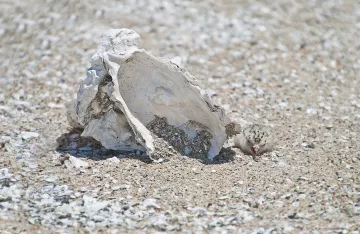By Dani Zacky

With summer around the corner, what could be better than a plate full of fresh oysters on crushed ice and all the fixings? But oysters are not just a tasty delicacy — they are also one of nature’s superheroes in helping to clean water and protect shorelines.
It is no secret that the Earth is already feeling the impacts of climate change, and the San Francisco Bay is believed to be one of the most impacted regions in California. Additionally, the San Francisco Bay is one of the most urbanized estuaries in the world. The industries that line the Bay’s shoreline include multiple oil and gas refineries, pesticide manufacturing plants, and the remnants of wartime nuclear material facilities. The Ocean Protection Council and California Coastal Commission project that by 2100 California will see a minimum of 3.5 feet of sea level rise — and up to 7.6 feet, depending on the speed of climate change. Sea level rise will not only push chemical pollutants further into our waterways, but in many cases, directly into shoreline communities.
So what does this have to do with oysters? These incredible bivalves make for a delicious meal, but are one of nature's most powerful aquatic filtration systems. A single oyster filters, on average, over 50 gallons a day, capturing toxins and foreign particulate matter as water passes through its gills. Incredibly enough, their filtration is not the only ecosystem benefit that oysters provide. Seawalls are a tactic implemented by many cities in order to protect shorelines from increased wave activity brought on by sea level rise, but oysters naturally build massive colonies that are similar in structure to these seawalls. Additionally, these oyster colonies support other species and thus promote increased biodiversity.
Other urbanized estuaries and waterways have had major success in implementing and encouraging oyster reefs back into the water. Thankfully, the Wild Oyster Project is doing similar work right here in the San Francisco Bay. They have been implementing a strategy called oyster shell recycling, which involves partnering with local restaurants and using their spent shells to create structures for living oysters to attach to. These structures, which encourage oyster reefs to grow, are strategically placed around the Bay to help mitigate the effects of sea level rise. To learn more about their work, head to their website at wildoysters.org.
Nature knows how to protect, clean, and support itself. It is important that, as environmentalists, we educate ourselves on and advocate for these nature-based solutions over manmade options. If you are interested in learning more about Bay issues and nature-based solutions, join the SF Bay Issues Group by emailing Dani Zacky at dani.zacky@sierraclub.org.
Dani Zacky is an organizer for the Sierra Club SF Bay Chapter.
Photo credit: Oyster shell on the Hayward Regional Shoreline. Photo by Hillary Van Austen, East Bay Regional Park District (CC BY-NC 2.0).